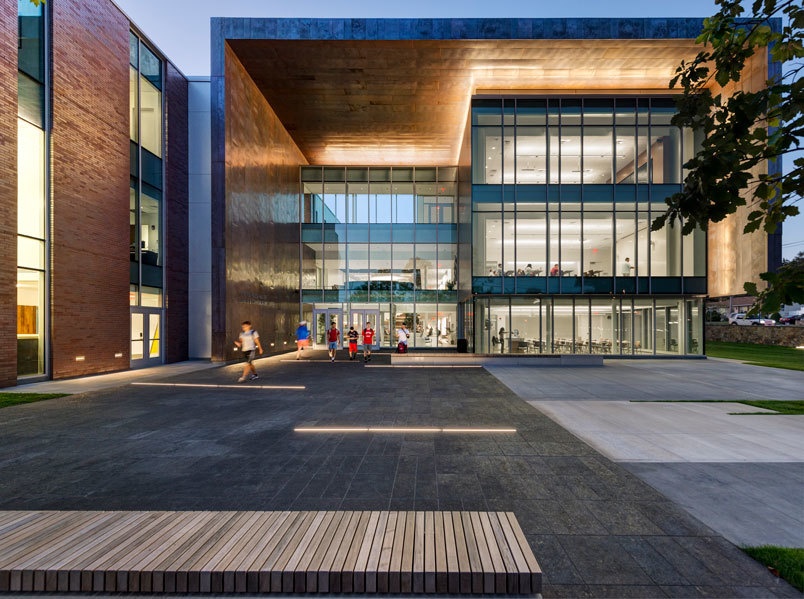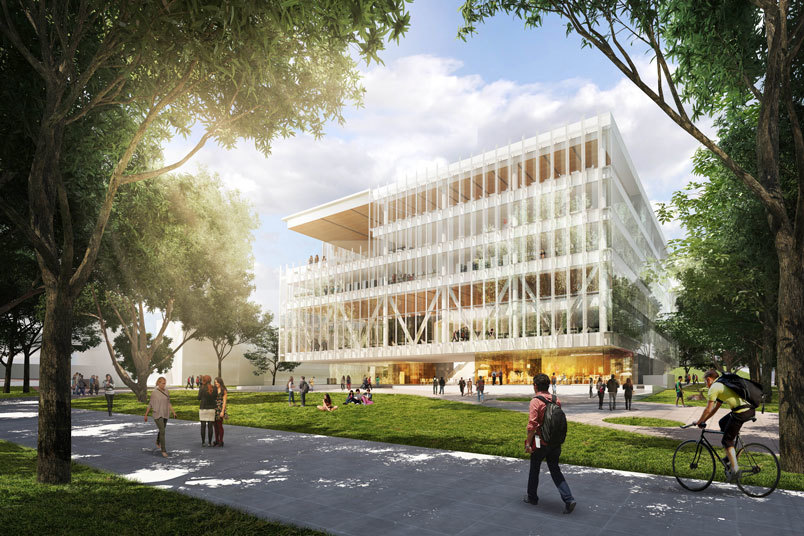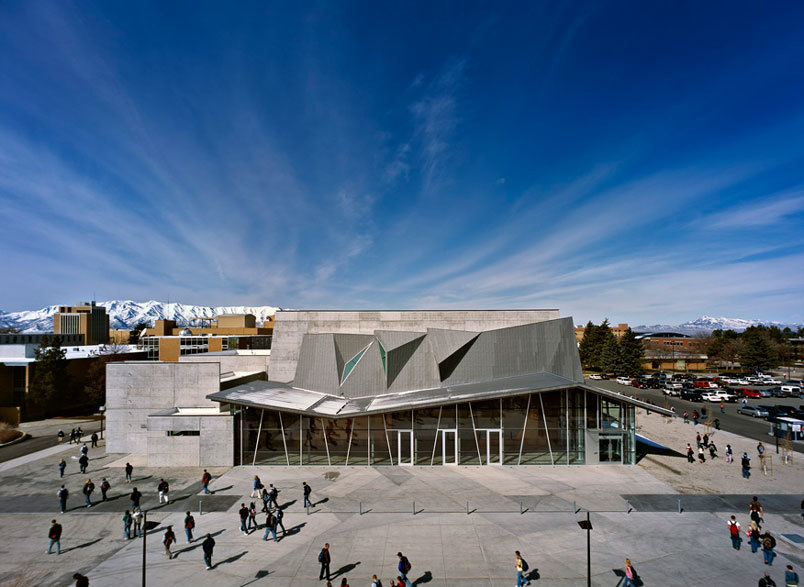Bradford J. Prestbo AIA

Name: Bradford J. Prestbo AIA, CSI, CDT
Job title and company: Technical Resource Group chair and senior associate, Sasaki Associates
Degree(s): BArch, Syracuse University
Professional interests:
One side of me is obsessed by technique and detail. The other is spontaneous, adaptive, and wary of getting bogged down with complicated processes. This duality manifests in being a practicing architect who works on a variety of project types and scales; helping make people successful—from emerging professionals to seasoned veterans—through teaching, product and service development, and mentorship; and in leading a cross-disciplinary group of “pirates” doing epic stuff in our Technical Resource Group (TRG). With TRG, we investigate and research tools—ranging from digital fabrication and generative design to knowledge management—that break us out of conventional thinking.
What are you working on now?
I practice in the intersection of art and building science, which combine in an architectural alchemy that resolves clients’ needs and embraces the surrounding context. This practice takes me in a few different directions: mentoring a group of emerging professionals on projects that range from detailing to consultant coordination; inventing new structures, cladding, and acoustic panels with custom-fabricated Computer Numerical Control (CNC) components; and collaborating with the Boston Society of Architects/AIA (BSA) to create a new committee, MakeTank. The MakeTank committee promotes making in the design process, and is looking to build a strong network to support the ongoing conversation regarding fabrication in our industry.
How do you explain to your mom what you do for a living?
My mother is a retired clinical social worker, and our conversations tend to focus on how the built environment affects people. These phenomenological discussions range from making serene spaces for individual contemplation to ways of fostering serendipitous interactions among strangers. My mother gets it, but in a completely different way than I do. These conversations are a welcome respite from my typically technical interactions with peers.

Above: Frank and Marisa Martire Business & Communications Center, Sacred Heart University. Image courtesy of Anton Grassl.
What architectural buzzword would you kill?
I would kill the phrase “digital practice.” To me, this is how we should all be practicing today, and we don’t need a special phrase to describe it. This phrase is generally used to describe how firms manage the integration of computer-based design technologies, but bifurcating your practice into “conventional” and “digital” practice creates an unnecessary divide.
What inspired you today?
In my 20 or so years in this profession, I’ve never been as excited about our future as I am now. We are at a convergence of increased information sharing and software interoperability; access to almost unlimited processing power and digital storage; and incorporation of new fabrication techniques that together will transform the way we practice architecture. For example, we recently designed and digi-fabbed interlocking plywood components using our office CNC machine and erected a freestanding structure! From conception to erection, it took only a few hours. The power of combining these processes breaks with traditional delivery methods and creates amazing new ways of crafting solutions for clients.
What are you reading?
I am bouncing around a few books, depending on my mood. I usually gravitate towards biographies, historical fiction, and knowledge management books such as Elon Musk: Tesla, SpaceX, and the Quest for a Fantastic Future by Ashlee Vance; The Art of Innovation: Lessons in Creativity from IDEO, America’s Leading Design Firm by Tom Kelley; and The New Digital Age: Transforming Nations, Businesses, and Our Lives by Eric Schmidt and Jared Cohen. In current rotation is also The Maze Runner omnibus by James Dashner, recommended by my daughter.
When you’re working, do you discuss or exchange ideas with your colleagues?
All the time! An architect can’t practice successfully without discussing and exchanging ideas with colleagues. No person or idea is an island; everything is interconnected in a project. And by colleagues, I don’t mean only those in the discipline or studio in which you happen to be practicing at the moment. I mean colleagues in the constellation of all other disciplines. As an information junky, I’m fortunate to be the chair of Sasaki’s Technical Resource Group, which gives me even more opportunities to learn new things from colleagues, encounter interesting ideas, and partake in stimulating conversations. Synthesizing all of this sometimes disparate information to improve your project or practice is tremendously stimulating—even more so when you are helping colleagues be successful.

Above: Tecnológico de Monterrey New Main Library,Tecnológico de Monterrey, Monterrey, Nuevo León, Mexico. Image courtesy of Sasaki Associates.
Do you sketch by hand or digitally?
I sketch both by hand and digitally. I don’t believe that we should be limited in our ability to communicate in any way. In our office, our production tools are mostly digital, but we can iterate so much more freely and quickly by hand. Out on a job site, where speed and clarity are prized, hand sketching is critical to convey ideas. It’s too easy for these skills to atrophy without practice. When I work with young professionals, I challenge them to perform the same drawing tests that Mies van der Rohe gave to his Illinois Institute of Technology students to teach hand drawing skills. Try this one: Hand draw a series of straight, non-overlapping parallel lines across a sheet of paper. Keep practicing until you can fill the page with line spacing no greater than 1/16-inch.
Has your career taken you anywhere you didn’t expect?
Absolutely. From a very young age, I have been enamored with this profession—but of course a young person’s idea of what an architect does is very different from my actual day-to-day. This profession has such depth and breadth, it would take a lifetime or two to explore them all. I’ve been challenged and inspired so much more than what a younger me could ever have anticipated.
In a literal sense, this profession has taken me all over Europe, North America, and Central America; farther if you count being transported by reading about works in places I have not visited yet.
Where is the field of architecture headed?
We are departing from a model in which architecture is commodified and our focus is on a discrete structure or site. Instead, we are becoming social problem-solvers, actively understanding and shaping cultural, environmental, and economic spheres. And as problem-solvers, one of the solutions we can provide is built work. We need to design for solutions through collaboration and networking, within the context of our built and unbuilt environments, through disruptive innovation. The future of our profession relies on us transitioning from narrow technical experts to broad social thinkers and doers.
Can design save the world?
I believe so, especially as our profession transitions from focusing on a discrete structure or site to become social problem-solvers. Being unbounded in our thinking about all of the built environment creates new opportunities for us to deploy our skills as problem-solvers and collaborate with other professionals such as technologists, biologists, and sociologists. The sooner we can make this transition, the better for the profession and the world.
What do you hope to contribute from your work?
In our practice, we explore “what if.” I hope that, through my work, people see what is possible in their work. This is especially true when working with emerging professionals, and seeing the design or construction world open before them. An angel gets his or her wings every time I hear “You can do that?!”
Who or what deserves credit for your success?
Any success I’ve had is because of the love and support my parents, sister, and family provide—especially my daughters, who make the long hours and stress worth it. And in a motivational way, my high school guidance counselor, who advised that my future career options did not extend beyond pumping gas at the local Texaco, which was my occupation at the time.

Above: Manon Caine Russell Kathryn Caine Wanlass Performance Hall, Utah State University. Image courtesy of Robert Benson.
Your least favorite college class?
I was never very successful at architectural history. I couldn’t figure out Professor Patricia Waddy’s questions or how to answer them. There are only so many pages of Marvin Trachtenberg you can memorize before one Gothic arch design blends into another.
If you could give the you-of-10-years-ago advice, what would it be?
Besides investing in Apple stock? I would tell younger me to help others be successful. I wish I learned this much earlier in my career. Back then, my focus was limited to the project in front of me, and obsessing over how to conceal every fastener. Now, I am outwardly focused and look for ways to help colleagues succeed at whatever they are doing. I think this is much more rewarding.
Your favorite Boston-area structure?
Simmons Hall at the Massachusetts Institute of Technology by Steven Holl Architects and Perry Dean Rogers Partners— the 2004 BSA Harleston Parker Medal winner. My good friend and colleague Gerry Gutierrez AIA and I recently presented our experiences of construction administration on this building to residents of the hall. It was great fun sharing how the building came to be with those living in it.
Who would you like the BSA to interview next?
Elon Musk.
If you were on a late-night TV show, what would your 30-second plug be?
At the end of every Technical Resource Group (TRG) meeting I remind the group that it’s easy to forecast the future when you are the ones making it happen and designing the path to get there. Groups like TRG and others in the office are shaping the future of our practice and profession. What will your contribution be?
If you could sum up your outlook on life in a bumper sticker, what would it say?
Succeed by doing.

